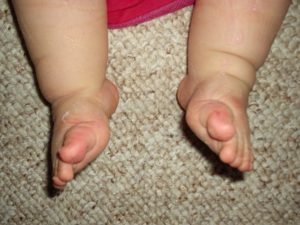Calluses, also known as skin callosity, are mainly characterized by a hardened, thick, and rigid area. It is a very common issue and can occur at any age, even in children.
The main cause of calluses in children is tight shoes or even the intense and repeated friction of the skin against the shoe. Calluses can also appear in other areas of the body besides the feet, such as the hands and elbows. All calluses are caused by repeated friction.
It is very common for calluses in children to appear during “growth spurts,” when the child grows rapidly and ends up with shoes that are too tight after only a short period of use. Parents need to pay close attention to the growth of their children’s feet and ensure they wear comfortable shoes1.
Tips for Choosing Footwear
- Choose shoes with a rounded and wider toe, as they are more comfortable;
- Leather or canvas shoes tend to be more comfortable;
- Avoid plastic shoes, as they tend to get hotter than normal and can cause discomfort;
- Opt for shoes without heels or with a low sole;
- The sole should be made of a material that allows the feet to breathe;
- Choose rubber soles, which reduce the risk of slipping.
The feet of children who are still developing are fragile and need attention and careful examination by parents, as well as close attention to footwear mainly during the school period, when they participate in many activities and need to be completely comfortable.
Worn-out shoes, soles that are semi-broken or have one side lower than the other, cause poor foot support and may also damage the spine due to misalignment. Changes in toenails, complaints of leg or foot pain, or even frequent tripping can be signs that the shoes are too tight. Stay alert!
Calluses do not cause more serious problems, but they can be quite bothersome, as they leave the skin slightly thicker and harder in the area of friction. In the case of girls, it can be somewhat embarrassing when wanting to wear sandals and having the affected area exposed.
Treatment for Calluses in Children
Usually, in simpler cases of calluses in children, the solution is simply to stop using the shoe that is causing the callus so that it completely disappears. However, in more complex cases, some kind of treatment or even a visit to the pediatrician or podiatrist may be necessary2. There are cases of very hard, painful calluses that do not go away easily.
Tips for Treating at Home
Some care steps can help hydrate and speed up the healing of callused areas, such as:
- Exfoliants and moisturizers (help remove hard skin);
- Lemon and patchouli cream (helps to soften and moisturize);
- Apple cider vinegar (speeds up the healing process of the callus).
During a warm bath, you can gently exfoliate until all the “dead” skin is removed from the callused area. Over the days, new skin will grow, making the area smooth again.
Exfoliation should be done gently, being careful not to injure or cause bleeding. Hurting the callused area can result in an infection and make the situation worse instead of solving it.
Medications and remedies used to eliminate calluses and warts are called keratolytics and antipapillomatosis agents and are not recommended for use in children3. These usually contain:
- Salicylic Acid;
- Lactic Acid;
- Fluorouracil;
- Urea.
Therefore, do not use any medication that promises to eliminate calluses without the prescription of a specialized doctor or your child’s pediatrician. Instead of resolving, they can cause more serious health problems for the child.
Instead of callus-removing medications, there are gel options on the market that promise to eliminate calluses. These naturally soften the hardened layer, gently treating the area. Talk to your pediatrician to find the best treatment for your child.
See also: What Are Warts and How to Eliminate Them?
Photo: Brachet Youri












